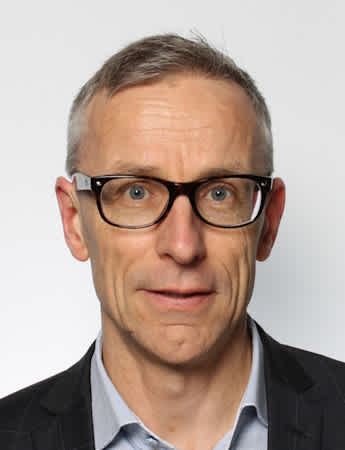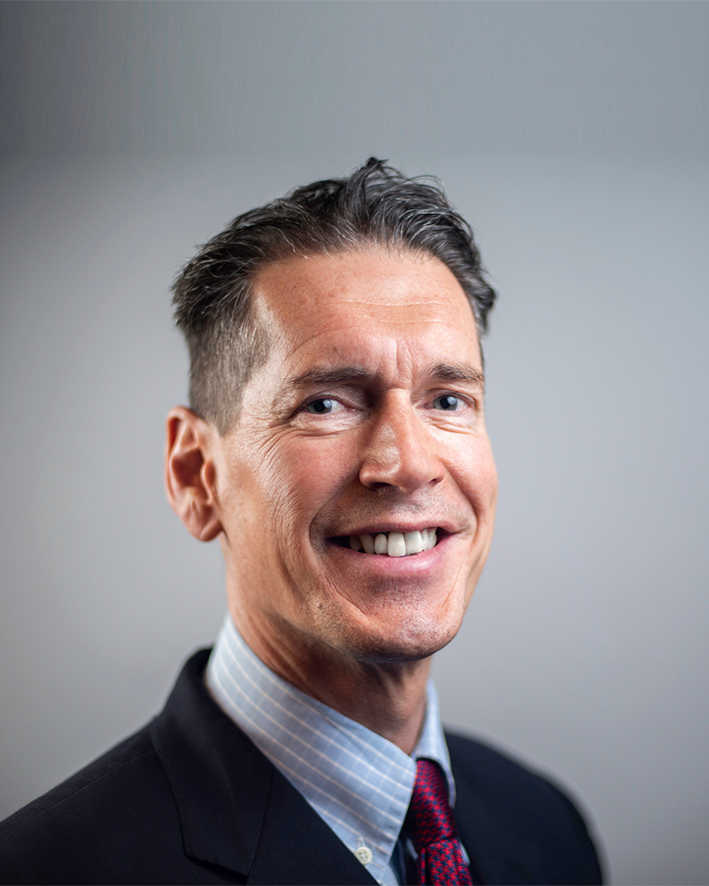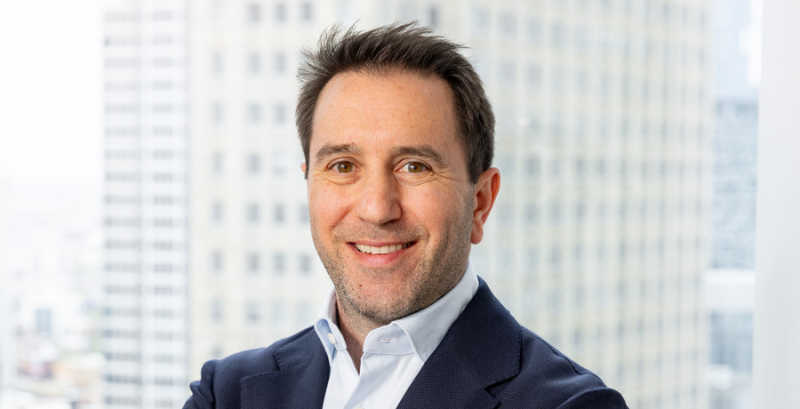‘Growth mindset’ key to building successful licensing programmes
Sisvel’s head of business development Jukka Nihtilä on the market opportunity for trusted dealmakers
Last September, Jukka Nihtilä was named Sisvel’s Head of Business Development, with a broad remit to identify new opportunities for the firm and turbocharge existing ones. He was previously a senior executive at Nokia Technologies, where he most recently led business development efforts around multimedia and new segments.
Sisvel Insights recently caught up with Jukka, who is now based in Barcelona, to discuss his new role and get his views on the current state of the IP market. The following Q&A covers his career in IP, Sisvel’s opportunities for expansion and what it takes to build successful licensing programmes in new verticals.
Jukka Nihtilä, Head of Business Development, Sisvel
Tell us about your professional background.
I’m an engineer by training with a PhD in product development methodologies. I spent the early part of my career in management consulting as well as in academia in Finland, France and Switzerland.
A large part of my professional career has been with Nokia, initially in the corporate venture unit (Nokia Ventures Organization) focusing on new business development related to mobile services and mobile applications (mobile email, mobile television). We developed early versions of mobile browsing, mobile RFID (NFC) and mobile TV. These were truly pioneering projects. Even though not all of them were big hits, they laid the foundation for many of the apps we all use today and also resulted in the creation of fundamental IP.
And how did you find yourself working in the world of IP?
In around 2007, there was a big push within Nokia to start looking at the business potential of the company’s intangible assets. There was a realisation that we were starting to build a cellular patent portfolio that was actually quite valuable, so the question was how to harness the business opportunities this created. At that time, I was recruited to the IP team to look at the possibilities around taking a more business-oriented approach to patent management. Nokia was also active in the patent transactions market from a very early date, and we used patent transactions as one tool to support our core patent licensing efforts. Over the years we did a significant number of strategic patent divestments as well as select patent acquisitions.
The second part of my career at Nokia Technologies was focused on business development and identification of new patent licensing opportunities. One of the most interesting projects was the preparatory work for the current OTT streaming licensing programme headed by Arvin Patel. Traditionally, Nokia licensing has been focused on devices. This was the first programme to address content and services, and it was built on Nokia’s significant contributions to MPEG codec standardisation.
Nokia seems to be having great success in new verticals. What do you attribute that to?
The Nokia team has developed a very good methodology for identifying licensing verticals, approaching them systematically, closing deals and building sufficient momentum to fully license the vertical before moving to the next one.
Also, there has always been a growth mindset in Nokia licensing. It’s been instilled in the team from the early days that licensing is not about one deal, it’s about building a programme – and then multiple programmes. That’s always been the approach, and I think you’re seeing those seeds continue to bear fruit.
Can you tell us about how you came to join Sisvel?
I was at the tail end of the workflow in terms of setting up Nokia’s streaming programme, which meant it was time to identify what was next, either within Nokia or beyond. I thought it was also the right moment in life to do something slightly different. Around the same time, I had a few conversations with Mattia Fogliacco in which he explained some of Sisvel’s business development plans, and it quickly became apparent that there was a good match for me to come on board.
You’re now heading Sisvel’s business development function. What is this team responsible for and what do you see as your main priorities?
First, there’s tremendous potential for Sisvel to address opportunities that are immediately adjacent to our existing licensing programmes. Whether you’re talking about Wi-Fi, cellular or video, all of these have natural development paths that can power further growth. The programme and licensing teams are focused squarely on dealmaking, and rightfully so. That’s where business development comes in – we have the resources to fully explore and drive some of those adjacent opportunities.
Second, we are actively looking into opportunities for new pools or joint licensing programmes – again staying pretty close to our existing core technology areas, although there are also some opportunities a bit further afield.
Finally, we are also looking at opportunities to beef up Sisvel-owned portfolios in our patent pools through strategic patent acquisitions.
As a relatively new arrival, how do you think Sisvel is perceived in the market? What are the reasons why patent owners might bring a new business opportunity to us?
Sisvel is well-known in the industry, and it has earned a reputation for balance when it comes to patent licensing. People understand that our programmes are not about maximising one-time royalty income – that model just doesn’t work in the long run. We are all about making sure that technology developers, innovators and inventors are compensated fairly and at the same time companies using the technologies obtain licence coverage at a reasonable cost. This approach accelerates technology adoption and powers next-generation technology development, as royalty distributions to our patent owners get fed back into their R&D machinery.
Any business development effort lives on the deal flow, so market perception is really important. Sisvel happens to be in a pretty good position, as we are truly valued as a solution provider to the industry at large. I have been positively surprised at the amount and quality of the opportunities that get brought to us.
Your job involves looking into the future. What are some megatrends you see shaping patent licensing over the medium term?
Patent aggregation is an important trend. I think the pool model, especially in the area of SEP licensing, is gaining increased appreciation in the market. It simply makes sense in terms of reducing transaction costs and making technologies available. We remain active in looking for new patent pool opportunities in areas where a pool is the best solution. This does not mean we will always drive for patent pools though – joint licensing programmes, bilateral licensing and syndicated deals are all important elements in our business development toolbox.
One-off syndicated deals such as the ones Sisvel has done with RPX are quite interesting because you have an opportunity to clear the market in a way that benefits both patent owners and licensees. Deals like these are highly contextual and time sensitive – given the number of parties involved, pulling them together is a bit of an art. The ability to execute this kind of deal is a huge asset for Sisvel.
Whether you’re negotiating a patent transaction or facilitating a new pool, what is your personal approach to dealmaking?
Agreements are really about finding common ground. Personally, I do not believe in the notion of “winning the deal”. You complete a transaction because it makes sense for everyone.
My principle has always been to understand what is important to the other party, and to enter with a clear view of what my own side considers as must-have. The understanding of your counterparty’s business drivers is instrumental in any business negotiation, and patent deals are no different. This becomes difficult in larger deals with a lot of stakeholders involved. Those are the most challenging deals, but they are also ones in which the asymmetry in understanding can create some room to manoeuvre.
Do you think there’s more interest in creative licensing solutions in the market today, despite the ongoing polarised debate over patent policy?
I see increased interest in the industry to reach solutions that enable business. There are many solutions-oriented people interested in truly finding common ground to ensure that products using patented technologies have adequate licence coverage. Sometimes this requires extraordinary creativity, yes.
Quickfire...
What’s a typical weekend activity for you?
I try to spend most of my weekends outdoors biking, hiking or on skis somewhere.
What should someone with a free day in Barcelona make sure they see, do and eat?
Brunch at the OMA restaurant in Eixample is always a good choice.
Where is your favourite holiday destination?
Impossible to name only one – Chamonix, Pyhä and Paris are all great locations to spend free time.
What’s the most memorable live performance you’ve witnessed?
Listening to a street band playing a version of the Band’s “The Weight” at the North Beach Festival in San Francisco.
What’s your favourite TV series?
Of the recent ones I have watched, Slow Horses was actually quite good.
What’s the best piece of professional advice you’ve received?
Be real.


